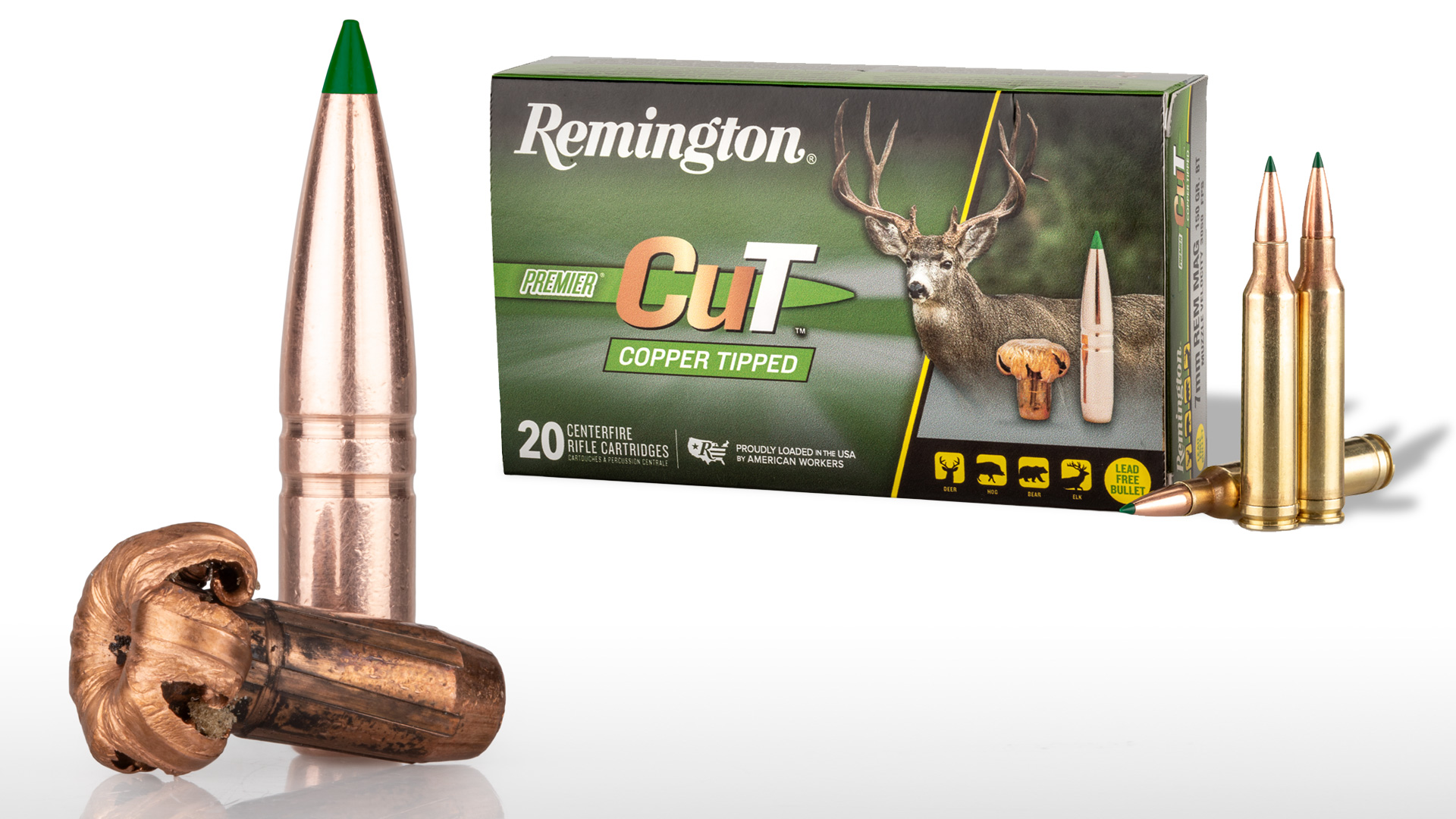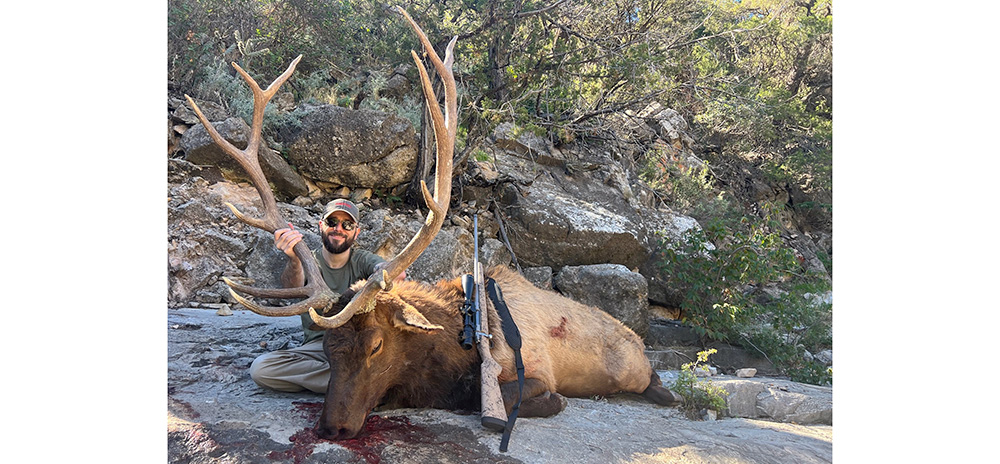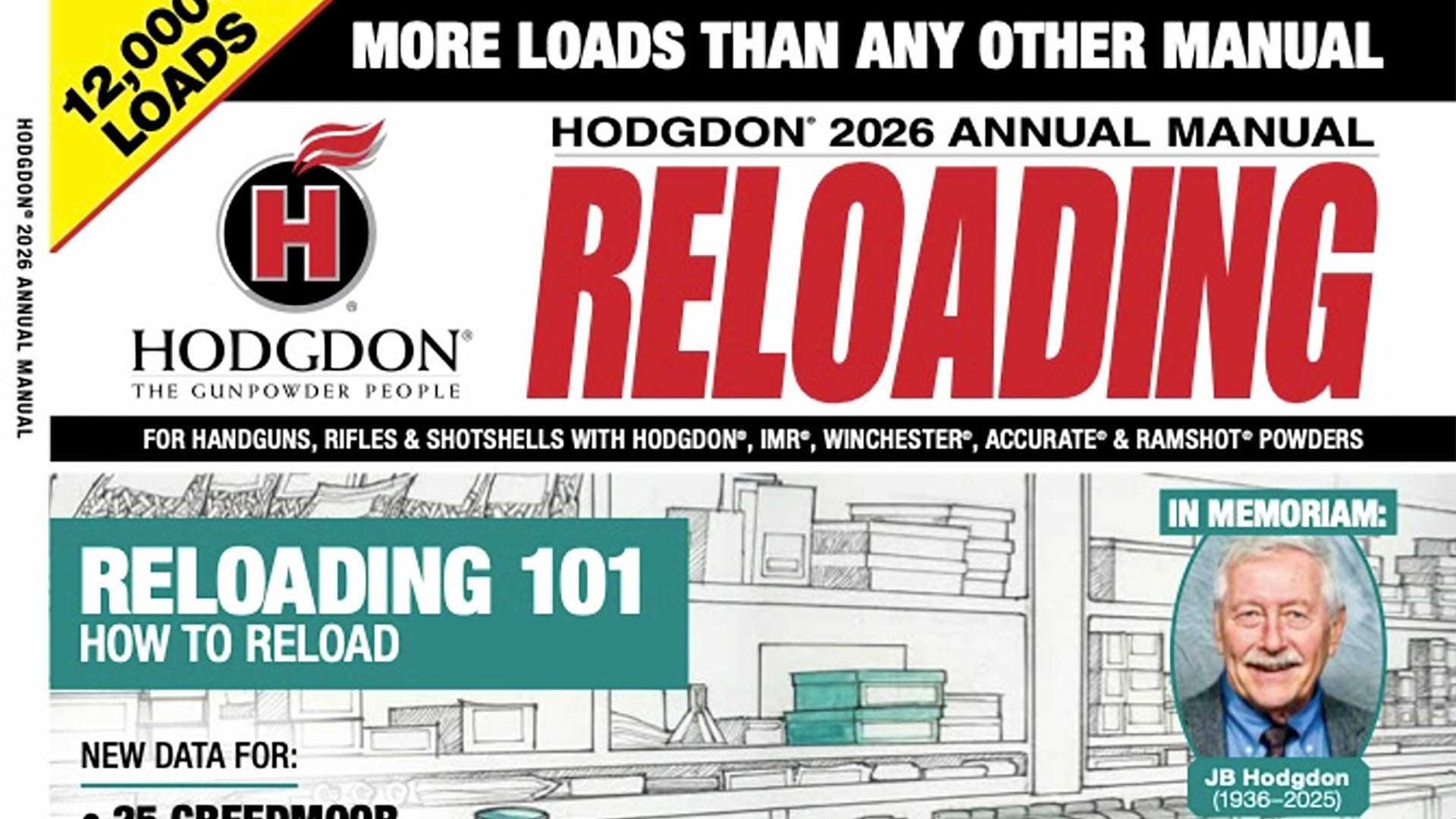
Despite some early teething issues, Randy Brooks’ X Bullet proved back in 1989 for Barnes Bullets that a core-less, all-copper projectile could be made that would provide consistent terminal results on game of pretty much any size. Today, following three-plus decades of further refinement to the concept, quality monolithic ammunition designs are better than ever and every bit as lethal in the field as a quality cup-and-core—while providing some innate benefits that a jacketed lead bullet just can’t. Meanwhile, the advantages, both before and after impact with its target, offered by capping a projectile with an aerodynamically streamlined polymer tip are probably even better understood and more firmly established at this point. So, if pulled off well, it tracks that uniting the two design elements together in one bullet has the potential to create a truly devastating game-stopping combination—even in those jurisdictions that don’t require the use of lead-free ammo for environmental reasons.
Such is the promise offered by Remington Ammunition’s new Premier CuT big-game hunting loads—which merge aspects of the company’s Core-Lokt Copper (CLC) and Core-Lokt Tipped (CLT) lines—that debuted earlier this year at SHOT Show 2024. At launch, Premier CuT exists as a family of nine loads, available in a nice assortment of both long-established mainstay cartridges and a few hyper-efficient new kids on the block to keep both camps happy. Most of the new loads are on the light side for their caliber: 6.5 mm Creedmoor (120 grain); 6.5 mm PRC (130 grain); .270 Win. (140 grain); 7 mm-08 Rem. (140 grain); 7 mm Rem. Mag. (150 grain); 7 mm PRC (160 grain); .308 Win. (150 grain); .30-’06 Sprg. (150 grain); and .300 Win. Mag. (180 grain). A tenth option, a .300 PRC of undetermined weight, is included on Remington’s website, but all details are listed as “TBD.” At the risk of ruining the suspense, I had the opportunity to draw first blood with Premier CuT—its .300 Win. Mag. version in specific—during an October elk hunt in West Texas, and my experience confirmed that the new ammo has the chops to take down even the biggest game that North America (or the African plains) has to offer.
While this is, of course, entirely subjective, I like the name; I think it’s clever, as the CuT moniker works on multiple levels. Not only in that this is a copper (Cu) bullet that employs a polymer tip (T), but also because of how easily its jagged monometal petals slice through tissue upon upset. Also, I’m glad the company didn’t elect to further expand upon the “Core-Lokt Copper” train of thought with this new line, as—with all due respect to Big Green—that name is nonsensical given that a CLC bullet contains neither a core nor a locking mechanism. I find the new line’s “Premier” tag to be appropriate as well, as it incorporates a few enhanced features that make it better suited to long-range endeavors that the more budget-minded, close-range Core-Lokt Copper lacks.
Until just recently, Remington’s slate of solid-copper rifle cartridge offerings was woefully lacking—to the point of being non-existent. I suppose there isn’t much impetus to adding copper to the menu when lead-core ammo designs are your bread-and-butter and your company shares a corporate umbrella with the pioneer in copper-topped ammunition, but that all changed when Barnes Bullets was purchased by Sierra in the Remington Outdoor Co. bankruptcy proceedings of 2020. Since that time, however, Remington Ammunition has been quick to rectify this gap in its coverage, first with the addition of CLC last year and now in 2024 with Premier CuT.
As mentioned before, most of the Premier CuT loads are light for what we’ve come to expect from their respective calibers, which is just a reality of their copper construction. This is due to the fact that copper is considerably (a little more than 20 percent) lighter than lead, one of the densest naturally occurring metals on earth. While Remington is understandably unwilling to publicly divulge the specifics of its new projectile’s exact chemical composition, the company says it’s an alloy consisting almost entirely of pure copper, but with a small amount of zinc mixed in.
Despite its lightness, copper is also significantly harder than lead, and unless steps are taken to mitigate that fact, bullets made from this material will tend to punch straight through tissue with minimal expansion or deformation. This is much of the reason why one of the earliest applications for copper ammunition was in nonexpanding solids for the hunting of dangerous game. It is also this hardness that contributes to copper’s reputation for nearly perfect post-impact weight retention, as copper is far less likely to fragment into smaller pieces upon striking soft tissue or hard bone, which equates to maximized energy transfer and ample penetration.
But while penetration comes naturally to copper, expansion is another issue altogether. To keep its projectiles from zipping through like an FMJ, Premier CuT utilizes specially placed skiving on the inside of the bullet’s hollow-point cavity to encourage expansion in several precisely engineered locations. The result is that, unlike lead-core bullets that tend to mushroom in a largely unpredictable fashion upon striking game, the harder Premier CuT’s leading edge will generally separate into small fingers or petals that then roll backward down the shank, forming a flower-like shape roughly twice the projectile’s initial diameter.
Pulling an unfired CuT bullet also revealed a pair of cannelures cut into its shank and a boattail at its base. Early all-copper/monolithic bullets gained a reputation for excessive barrel fouling, but adding these annular relief grooves provides room for any flecks of copper sheared off by the barrel’s steel lands to accumulate—which decreases fouling, reduces bearing surfaces (and thereby internal pressures) and improves accuracy. According to Remington, regardless of cartridge, two cannelures were found to provide the optimal solution without increasing drag and lowering aerodynamic efficiency unnecessarily. The boattail heel, which CuT bullets have but CLCs lack, works in tandem with the polymer tip to maximize the bullets’ in-flight ballistic potential—making the new ammo the superior choice for longer-range, western-style hunting.
Premier CuT’s hard, spitzer-shaped, green (because marketing), polymer tips are similar, but not identical, to those used in the Core-Lokt Tipped line, however, the basic function is the same. CuT does for Remington’s monometal lineup what CLT did for its cup-and-cores two years ago—it gives it a major aerodynamic boost. Using Remington’s 150-grain .30-’06 Sprg. CLC and CuT loads to give us an apples-to-apples comparison, the hollow-point CLCs have a G1 ballistic coefficient (BC) of 0.278, while the sharp synthetic tips (combined with the boattail) of the Premier CuTs impart a substantially higher BC of 0.441—an improvement of 58.6 percent.

A deep penetrator, during the author’s testing through a 16"-barreled Springfield 2020 Redline, Remington’s 120-grain 6.5 mm Creedmoor Premier CuT penetrated almost exactly 32" into Clear Ballistics 10 percent ordnance gelatin before altering course and leaving the block.
The CuT bullet’s far superior ability to overcome resistance in flight extends the useful range of its cartridge considerably. With a rifle zeroed at 200 yards, a 150-grain .30-’06 CLC traveling the listed velocity of 2,910 feet per second (f.p.s.) at the muzzle will drop 8.7" at 300 yards and 55.4" by the time it reaches 500 yards—with a 10-m.p.h. full-value wind knocking it off course 11.5" and 36.6", respectively, at those distances. Despite leaving the barrel moving 90 f.p.s. more slowly (2,820 f.p.s.), the 150-grain CuT travels more flatly, dropping just 7.8" and 45.7" at 300 and 500 yards, respectively, while drifting only 7.1" and 21.3" at the same ranges. On the energy side of the equation, the CLC bullet may start with marginally more, but it still carries only 1,318 ft.-lbs. at 200 yards, 994 at 300 yards and 743 at 500 yards—compared to 1,654, 1,397 and 1,174 ft.-lbs. for its CuT counterpart. Hard to argue with a longer point-blank range, less wind deflection and more downrange energy while also producing less recoil.
Of course, companies have also been inserting polymer tips into bullet cavities to help initiate expansion for decades, as impact with the target media forces the rear of the tip into contact with the inside of the cavity, which mechanically aids in the upset of the bullet—and that concept applies here, too. A plastic tip acting as the meplat likewise helps protect the actual metal front surface of the projectile from potential damage, which would not only negatively influence accuracy but could also disrupt proper expansion.
Blessed with an opportunity to be the first to put Remington Ammunition’s new design to the test, last October, I found myself trekking across the brutal-but-beautiful Glass Mountains of West Texas armed with a .300 Win. Mag.-chambered Ruger Hawkeye FTW Hunter topped with Trijicon’s versatile AccuPoint 3-18X. While I don’t usually picture elk when I think of Texas game, I was thrilled to have my misconception shattered, as we literally encountered more mature bulls during the first morning of my adventure in the Lone Star State than I had in four full days of hunting northwest Colorado three years ago. One of them, a very talkative 6x6 bruiser, was an obvious shooter—so I did.
A quartering-away shot from about 200 yards penetrated fully and left the body, so we weren’t able to recover and scrutinize the bullet, but it did create a channel of messy vitals and obliterate the opposite shoulder on its way out, causing the 7-year-old bull to tumble headlong down a ravine and quickly expire. Many thanks go to Josh Coffey and the rest of the High West Outfitters crew for the expert tracking and for helping me pack the huge beast’s edible bits and rack out of the gully.
Taking that Ruger back with me to Virginia, I ran the .300 Win. Mag. CuT through Rifleman’s established five-shot, five-group accuracy protocol. It fared very well: The smallest group of the day measured 0.80" and the largest was 1.76", with the other three all hovering around the 1" mark—more than sufficient for any ethical hunting distance. Curious to see how a second chambering would group through a second rifle, I had Remington send me a small stash of 6.5 mm Creedmoor CuT, I pulled a Springfield 2020 Redline from the NRA Publications inventory and I headed back to the range. The results were slightly even better this time; five groups came to an average of 0.97", with three of the five being solidly sub-m.o.a.
Since the bullet that dropped my elk had not been retrievable, and because I take any opportunity I can to catch bullets in the name of science, I decided to also conduct a bit of expansion/penetration testing. Fired into two blocks of Clear Ballistics 10 percent ordnance gelatin laid end to end from 50 yards, through just the 16" barrel of the handy 2020 Redline, the Creedmoor—which is deemed (by some) to be underpowered for big game—penetrated deeply before altering course downward and exiting the second block at almost exactly the 32" mark.
The expanded bullet then embedded itself into the bag of mulch that I always use as a backstop during penetration testing but had never actually needed prior to this test. The easily recovered projectile measured 0.48" at its slimmest and 0.52" at its broadest (compared to 0.264" pre-impact) and had held on to 119.4 grains (99.5 percent) of its original 120-grain weight—which leads me to believe that CuT’s green tip probably weighs right around 0.6 grains. Between this result and the prior experience with my elk, I think two-hole hunters are going to love Premier CuT.

Penetrating fully before exiting, the .300 Win. Mag. (180-grain) Premier CuT bullet was easily up to the task of dropping this huge 6x6 elk bull from a distance of approximately 200 yards during the author’s West Texas hunt last October.
As the political climate continues to grow increasingly hostile toward the use of lead ammunition, a new copper-monolith hunting load on the market makes good business sense for any manufacturer, and having an additional quality new option is always great news for all hunters, regardless of where they live. While loading up with lead-free ammunition may be required in some areas, Premier CuT has proven itself to me both on the range and—even more importantly—out with the hunt of a lifetime on the line, to the point that I can earnestly recommend its use even in those places that don’t limit a hunter’s choices. And Remington is planning to price Premier CuT very competitively with its Core-Lokt Tipped line, so users of copper won’t have to pay a premium for the privilege.
If Remington’s Core-Lokt has a reputation among hunters as the “deadliest mushroom in the forest,” then Premier CuT proves that Big Green is now also in the killer flower business.





































